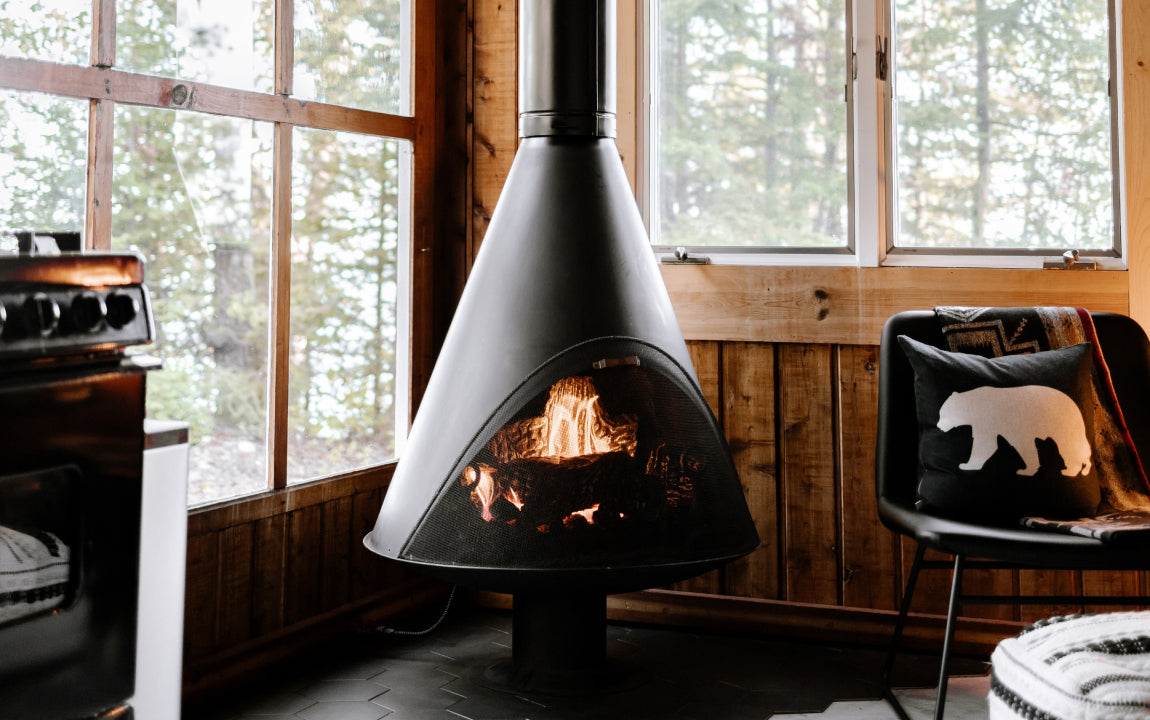But I love my fireplace!

But...I LOVE my fireplace!
Sentiment often overrides sensibility when it comes to fireplaces. Fireplaces are such a warm and cozy addition to a home, even when they are not being used, that they are often a requested item in existing home searches and new build construction. Fireplaces are found even in the warmest parts of the world—deserts where it can get cold at night and tropical places where it gets cold only occasionally. In the latter, why take up space in your home that may only be used a few times a year? Here’s why: fireplaces create nostalgic, warm feelings and memories, and it’s the sentiment of the fireplace that people enjoy year-round.
I love the look of the traditional fireplace in my home, but it’s rarely used for several reasons. I grew up in a home with a working wood-burning stove, and I can tell you that a large supply of dry, seasoned firewood is not easy to get due to the labor and storage it requires! Cut, split, stack, move, stack….so even though I live “in the woods” now, I am not inclined to keep wood on hand to use often. Then, there is the minimal heat that it provides. In fact, if it’s a cold evening and you also have central heat working in your house, starting a fire in a traditional fireplace actually removes heated air from your house and sends it right up the chimney, costing more to heat the rest of your house!
In addition, the last time I started a fire in the fireplace (and this was even after having the chimney cleaned), the room had a distinctly smoke-y smell that took a long time to dissipate. This was not good, as I now know that super-small particles were floating around in the air and my friends and I breathed them.
After cleaning up the ashes, I knew there was something to learn here. Here are some tips for enjoying the heat and ambiance of fire with safety first, of course!
- Install a CO (carbon monoxide) monitor, at least for the room(s) in which the fireplace stands. CO is a colorless, odorless gas that is very dangerous even in low concentrations, and can build up when the fireplace flue has leaks or obstructions (like buildup or partially closed damper). Some smoke detectors are paired with CO monitors for double-duty.
- Make sure the damper is fully open when using the fireplace to vent gasses, and fully shut when the fire is out and cold (to avoid heated air from escaping). Check the position of the handle and door before starting the fire just to be sure, by putting on a pair of safety glasses, grabbing a flashlight and sticking your head into the firebox and looking up (don’t skip the glasses!).
- Using glass doors instead of just a screen helps to contain the smoke in the fireplace. The surround needs to be sealed to the brick using an appropriate caulk.
- Make sure the wood is dry and seasoned for at least six months.
- Use a hairdryer or blowtorch to get heated air flowing up the chimney before lighting the fire. This “primes” the air draft and reduces the chance of smoke coming into the room once the fire is lit. Hold the heat source in the middle of the firebox for several minutes.
- Never burn cardboard, plastics or treated wood.
- Never use a regular vacuum to suck up ashes, because normal vacuum filters are not fine enough and end up spewing ashes into the air! Invest in a good ash vacuum to remove the ashes if you want to thoroughly clean the fireplace between uses.
No matter if your fireplace works to increase ambiance or heat, it’s good to look into upgrading for health and efficiency:
- If you still want to use wood, consider upgrading from a bare-box fireplace to a fireplace insert. Fireplace inserts seal the combustion area and improve heat transfer to the room over a traditional fireplace. Make sure it was manufactured after 1992, as certain federal air-quality regulations went into effect at that time, helping to burn wood more cleanly.
- If you don’t need to heat your entire home, consider electric inserts (also called “infrared”). Electric is very energy efficient and does not require a vent (meaning you can install it anywhere that you can run electricity) and it produces no emissions in your home. Simulated flames in new fireplaces are actually very real-looking! Free-standing fireplaces are available to place anywhere you need heat and have an electrical outlet, and you can even have simulated fire without heat production.
- Gas inserts are an easy way to heat your room with real flames, but they must be professionally installed for safety and venting purposes. If you have an asthmatic person in your household, however, new research indicates that the nitrous oxide produced from any gas-burning appliances in the home can affect their condition. See our post “Hidden Dangers in Gas Appliances”.
- Pellet stove inserts come in sizes that can heat an entire home for days depending on the pellet bin capacity, because they self-feed a small amount of pellets into the fire every few seconds. Pellets burn cleanly with very little ash (about a cup of ash per 40-lb sack of pellets). They do need professional installation to ensure that exhaust gasses are completely contained in the flue system. Before investing in one, check for pellet availability and prices in your area at fireplace stores, hardware and farm supply stores.






